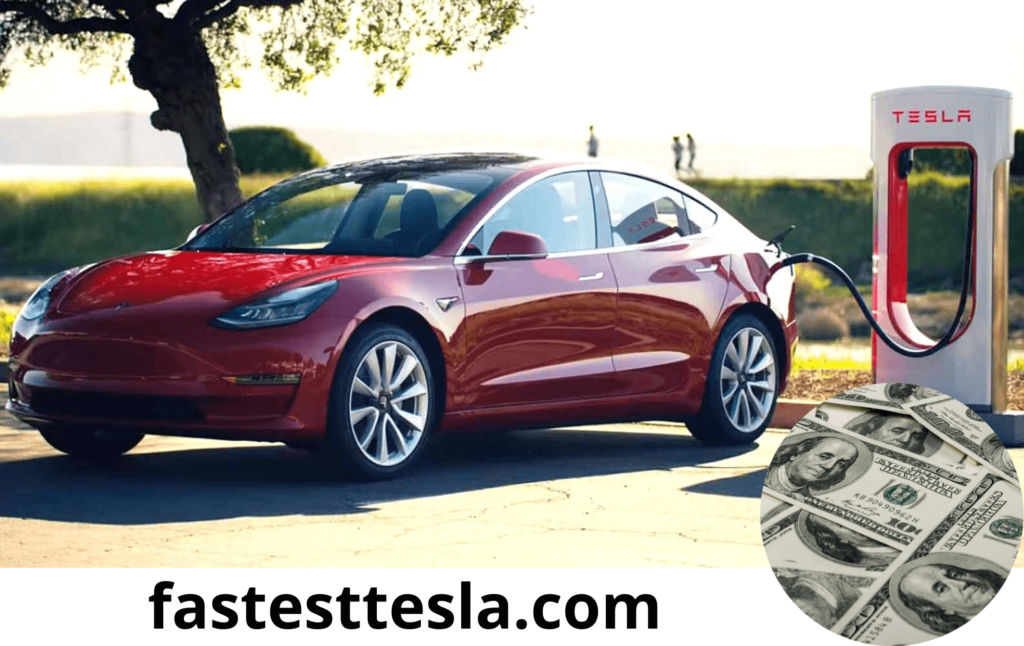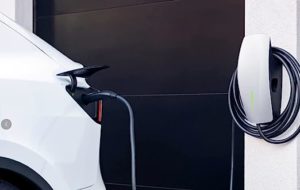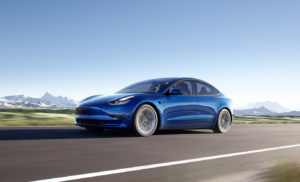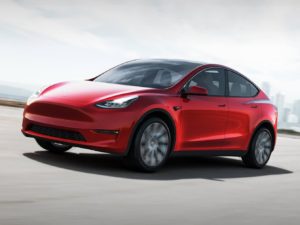The Cost of Charging a Tesla: Understanding the Expenses and Factors Affecting. As the popularity of electric vehicles continues to grow, many prospective Tesla owners wonder about the cost of charging their vehicles. It is crucial to understand the charging costs associated with owning an electric vehicle to make informed decisions and budget accordingly. This article explores the various factors that influence the cost of charging a Tesla and provides an overview of the expenses involved.
Some helpful articles,
- ChargePoint & EVgo: Where to Charge Your Tesla
- Tesla battery: what happens if your Tesla runs out of battery?
- What happens when Tesla battery dies on the road?
- Tesla Cybertruck: Revolutionizing the Future of Electric Pickup Trucks
- The Tesla Roadster: Revolutionizing Electric Sports Cars
Factors Affecting the Cost:
- Electricity Rates: The primary factor influencing the cost of charging a Tesla is the price of electricity in your area. Electricity rates can vary significantly based on your location, utility provider, and the time of day you charge your vehicle. To determine the exact cost per kilowatt-hour (kWh) in your region, it is advisable to consult your utility company or check your electricity bill.
- Charging Method: Tesla offers different charging options, each with its associated costs. Let’s explore the most common methods:a. Home Charging: Charging your Tesla at home using a home charging station is the most convenient and cost-effective option. The cost will depend on your local electricity rates and the efficiency of your charging equipment. On average, home charging for a Tesla ranges from $0.08 to $0.14 per kWh. This means that a full charge can cost approximately $6 to $11, depending on the model and battery size.b. Supercharging: Tesla’s Supercharger network provides fast charging for long-distance travel. While supercharging is highly convenient, the cost per kWh is typically higher compared to home charging. Supercharger rates vary by region, ranging from $0.25 to $0.35 per kWh. It is important to note that Supercharger rates may change over time and can differ based on peak and off-peak hours.
- Battery Size and Range: The cost of charging a Tesla also depends on the vehicle’s battery size and driving range. A larger battery pack requires more energy to charge fully, resulting in higher charging costs. However, it is essential to consider the range of your Tesla as it directly impacts the frequency of charging and, consequently, the overall charging expenses.
- Charging Efficiency: Charging efficiency is another crucial factor affecting the cost. The efficiency of your Tesla’s charging system, as well as any energy losses during charging, can impact the amount of electricity consumed. Tesla vehicles typically have an efficiency rate of around 85% to 90%, meaning that approximately 85 kWh to 90 kWh of electricity are stored in the battery for every 100 kWh drawn from the grid.
Calculating Charging Costs:
To estimate the charging costs for your Tesla, follow these simple steps:
- Determine your electricity rate: Check your electricity bill or contact your utility provider to find the cost per kWh.
- Identify your vehicle’s battery capacity: This information can be found in the vehicle’s specifications or user manual.
- Calculate the energy consumption: Multiply the battery capacity (in kWh) by the charging efficiency to estimate the energy consumption during charging.
- Determine the charging cost: Multiply the energy consumption (in kWh) by the electricity rate (per kWh) to find the charging cost.
Example Calculation:
Let’s consider a scenario where your Tesla Model 3 has a battery capacity of 60 kWh, your electricity rate is $0.12 per kWh, and the charging efficiency is 90%.
Energy consumption = 60 kWh x 0.90 (charging efficiency) = 54 kWh Charging cost = 54 kWh x $0.12 (electricity rate) = $6.48
It is important to note that this calculation provides an estimate, and the actual charging costs may vary based on regional electricity rates, charging equipment efficiency, and driving conditions.
Additional Considerations:
- Time-of-Use Electricity Rates: Some utility providers offer time-of-use (TOU) electricity rates, where the price per kWh varies based on the time of day. Taking advantage of lower rates during off-peak hours can significantly reduce charging costs if your utility company offers this option.
- Solar Energy and Off-Grid Charging: If you have solar panels installed at your home or access to renewable energy sources, charging your Tesla can be even more cost-effective. Utilizing solar energy allows you to offset or eliminate electricity costs for charging, providing a sustainable and economical solution.
- Maintenance and Long-Term Savings: While the initial cost of a Tesla may be higher than that of a conventional vehicle, electric vehicles generally have lower maintenance and operational costs. With fewer moving parts and no need for oil changes, the long-term savings on maintenance can offset the charging costs over time.
How much does it cost to charge a Tesla Model 3?
Let’s delve into the newer models, starting with the most affordable Tesla to date, the Model 3. The Model 3 comes in different trims with varying battery sizes. The Standard Range Plus Model 3 is equipped with a 50 kWh battery, while the Long Range and Performance versions have an 82 kWh battery.
Let’s begin with the smallest battery and work our way up. Charging a 50 kWh battery on the Tesla Model 3 Standard Range Plus will cost approximately $8.24 to reach a full charge. That’s quite reasonable. As battery size increases, so does the range, but it also means longer charging times and additional costs. Let’s calculate the charging costs for the Long Range and Performance trims. An 82 kWh battery, accounting for an 85% charging efficiency, will cost around $13.51 on average in the US to charge from 0% to 100%.
Now, let’s discuss the mileage. The Long Range Model 3 offers an EPA estimated range of 353 miles, which amounts to approximately $0.038 per mile or $3.83 for every 100 miles driven. The Performance trim on the Model 3 follows closely with an EPA range of 315 miles, resulting in a cost of around $0.043 per mile or $4.39 per 100 miles.
Last but certainly not least (unless we’re talking about range) is the Standard Range Plus Model 3. With a range of 262 miles, it will cost you approximately $0.032 per mile or a very reasonable $3.15 for every 100 miles traveled.
These calculations provide an estimate of the cost per mile and the charging expenses for the different Model 3 trims.
How much does it cost to charge a Tesla Model S?
Tesla Model S are equipped with a 100 kWh battery pack, which makes it easy for us to calculate the costs. Initially, the price for 100 kWh of energy would be $14. However, we need to consider the efficiency of AC chargers, as they are not perfectly efficient.
On average, Level 1 and Level 2 AC chargers have an efficiency rate ranging from 80% to 90%. To maintain a conservative estimate, let’s assume an efficiency rate of 85%. Now, let’s revisit the calculation.
For a Model S with a 100 kWh battery, charging at a rate of $0.14 per kWh, we need to account for the 15% additional energy required due to inefficiency. Consequently, it will cost approximately $16.47 to fully charge your Model S from 0% to 100%. However, it’s important to note that the actual cost may be slightly lower depending on the starting battery life.
Let’s consider the estimated range of both models. The Model S Long Range has an EPA estimated range of 405 miles, resulting in a cost of approximately $0.041 per mile or $4.07 for every 100 miles of range.
On the other hand, the Model S Plaid has an estimated range of 396 miles, translating to a cost of approximately $0.042 per mile or $4.22 for every 100 miles of range.
These calculations provide a general idea of the costs associated with charging the Model S Long Range and Plaid versions. However, it’s worth noting that actual costs may vary based on factors such as electricity rates, charging equipment efficiency, and driving conditions.
How much does it cost to charge a Tesla Model X?
Similar to its sedan counterpart, both upcoming trims of the Model X are equipped with a 100 kWh battery pack. Consequently, the cost to fully charge your Model X from 0% to 100% is also $16.47.
However, it’s important to note that the Model X is a larger and heavier Tesla compared to the Model S, resulting in a lower range. Therefore, let’s calculate the cost per mile for the Model X.
Starting with the Model X Long Range, which has an estimated range of 360 miles, the cost per mile comes out to approximately $0.046. This means it would cost around $4.58 to cover a distance of 100 miles.
Moving on to the Model X Plaid, which offers a speedier performance but a lower range of approximately 340 miles, the cost per mile is roughly $0.048. This translates to a cost of approximately $4.84 for every 100 miles traveled.
These calculations give us an estimate of the cost per mile for the Model X Long Range and Plaid versions. However, it’s worth mentioning that actual costs may vary based on factors such as electricity rates, charging efficiency, and driving conditions.
How much does it cost to charge a Tesla Model Y?
The Model Y currently offered in two trims, both the Long Range and Performance versions come equipped with a 75 kWh battery.
For Model Y owners in the US, it will cost approximately $12.35 on average to fully charge their Tesla.
Now, let’s break it down in terms of mileage. The Model Y Long Range, with its EPA estimated range of 326 miles, will cost around $0.038 per mile or $3.79 for every 100 miles traveled.
As for the Performance version of the Tesla Model Y, which boasts an EPA range of 303 miles, the cost comes to approximately $0.041 per mile or $4.08 for 100 miles.
Conclusion:
The cost of charging a Tesla depends on several factors, including electricity rates, charging method, battery size, driving range, and charging efficiency. By considering these factors and performing simple calculations, you can estimate the charging costs for your Tesla. Additionally, exploring time-of-use electricity rates and utilizing renewable energy sources can further optimize charging expenses. Understanding the cost of charging a Tesla allows prospective owners to make informed decisions, embrace the benefits of electric vehicles, and contribute to a sustainable future.






